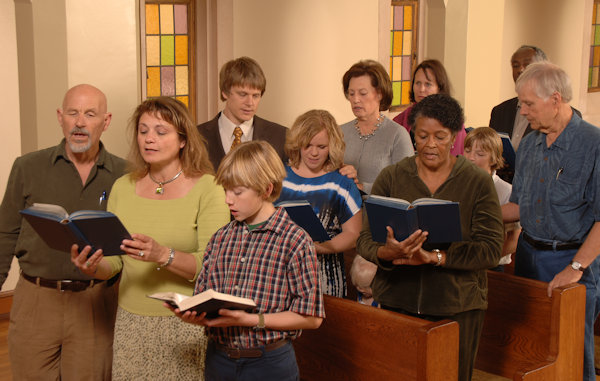Topline stats for The United Methodist Church are down but there are bright spots in the data.
HEATHER HAHN
United Methodist News Service
The United Methodist Church in the United States continued to see its membership and attendance slide in 2015. However, those numbers don’t tell the whole story of what’s happening across the denomination.
The denomination has 7,067,162 professing members in the United States, according to 2015 data released Nov. 17 by the General Council on Finance and Administration.
That marks a decrease of about 1.6 percent from 2014, the same percentage decrease seen between 2013 and 2014. The number does not include clergy, nor does it include children who are baptized but not yet confirmed.
Average weekly U.S. worship attendance stands at about 2.7 million, a drop of about 2.9 percent from 2014.
“It’s a decline, but it’s not as much as projected,” said Lauren Arieux, statistician and research fellow of U.S. data for the denomination’s finance agency.
“What we’re seeing is a stable decline,” she told agency board members.
The agency is still collecting 2015 data from central conferences — church regions in Africa, Asia and Europe. As of 2013, the central conferences had a total of 5,525,924 professing members. Based on consistent growth in Africa, the finance agency expects that number is higher today.
The United Methodist Church remains the third largest religious body in the United States — behind Catholics and Southern Baptists, but ahead of Mormons.
Arieux pointed out that United Methodists are not alone in seeing declines, and in fact are faring better than fellow mainline Protestants.
Most Christian denominations, including the Roman Catholic Church and Southern Baptist Convention, have seen their U.S. numbers drop in recent years.
At the same time, the religiously unaffiliated — that is, “nones” — have grown into the U.S.’s second largest religious category, according to Pew’s 2014 Religious Landscape Study.
The need for membership data
The United Methodist Church uses professing membership and clergy figures to determine just how many delegates each conference can send to General Conference, the denomination’s top lawmaking assembly.
The 2016 General Conference approved legislation that specifies the secretary of the gathering will make delegate calculations based on the most recent conference journals submitted to the General Council on Finance and Administration. The legislation would apply to General Conference starting in 2020.
Any called General Conference before then will use the same allocation of delegates used for the 2016 assembly.
Staff from the finance agency plans to lead training sessions in Africa in 2017 that will, in part, help African United Methodists supply the needed data to the General Council on Finance and Administration.
Where the U.S. church is growing
While the topline U.S. numbers show declines, there are bright spots in the data.
U.S. churches saw 114,685 new members join last year by profession of faith or faith restored. That figure includes people who completed confirmation or were previously unchurched for some time. Another 40,918 new members joined by transferring from another denomination.
Sixteen of the denomination’s 56 U.S. conferences also reported increases in their professions of faith between 2014 and 2015.
The church, which still is 90 percent white in the United States, also is seeing slow but noticeable growth in its ethnic diversity. In 2015, the denomination added 205 more Hispanic/Latino and 106 more Pacific Islander members.
“The increases are small, but they’re there,” Arieux said. “We attribute some of that to better reporting, but we also know that there are parts of the country where The United Methodist Church is not as white as it used to be.”
More than half of last year’s losses — 181,587 individuals — resulted from churches removing long inactive members from their rolls or correcting previous data. Another 95,343 were removed from the rolls because of death, or as United Methodists would say, they joined “the church triumphant.”
Churches report only 25,405 members withdrew because of joining another denomination.
Looking ahead
The numbers do not surprise the Rev. Steven D. Court, a board member of the General Council on Finance and Administration. He is also director of connectional ministries in the East Ohio Conference.
“We need to use numbers as sticky notes,” he said. “They tell us where to look. What I look for are places that have seen an upturn.”
He noted that increasingly Americans are participating in church in different ways than sitting in a pew on Sunday morning.
He and other board members are excited that in coming years Arieux plans to ask congregations to note any online worship attendance in the information they submit.
Among those board members is the Rev. Sandra Olewine, who leads First United Methodist Church in Pasadena, California . Her congregation regularly gets views of its livestreamed services by military members serving overseas.
Her congregation also recently did a rigorous cleaning of its rolls, after years of neglect. The resulting membership figures dropped from about 600 to 475. At the same time, the church’s percentage in worship is higher.
“We now know who we are,” she said. “There is an excitement about that because we not only can tend to who we have, but we know who we need to activate to be outside in the world.”
Last Updated on December 27, 2022

